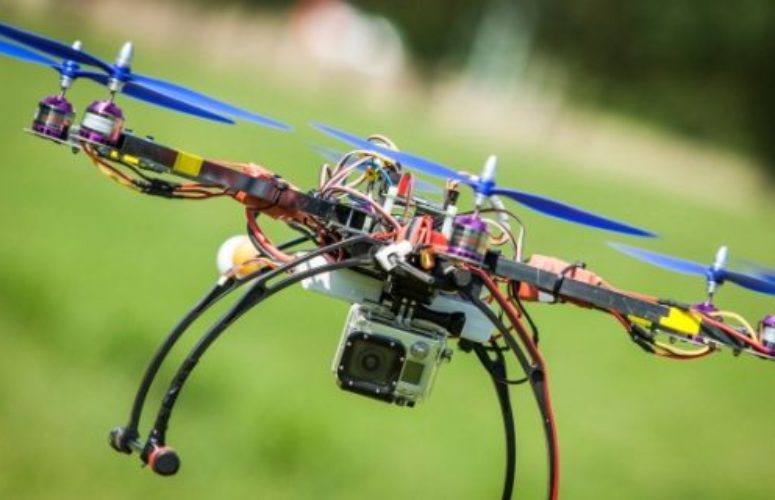
NJIT to Participate in First Ship-to-Shore Drone Delivery
On Jun 13, 2016A team of medical personnel, emergency management specialists and drone technology experts, including from NJIT’s New Jersey Innovation Institute (NJII), will conduct the first ship-to-shore drone delivery in the US on June 23 on the New Jersey coastline.
The flights will demonstrate the capacity of unmanned aircraft systems (UAS) to provide lifesaving aid to victims of a disaster, such as a hurricane or system-wide failure of electrical or communications infrastructure. In a test, the Nevada-based drone delivery company Flirtey will fly medical samples for emergency testing between an improvised onshore medical relief camp at Cape May and a test facility on a vessel stationed off the coast. In a round trip, the company’s drones will also deliver medical supplies from the vessel to the onshore camp.
The Red Cross and several United Nations (UN) agencies will participate in the event, coordinated by the disaster readiness organization Field Innovation Team (FIT), to assess the technology’s ability to improve the timelessness and reliability of medical equipment delivery and diagnostic testing in disaster zones.
“We recognize the opportunity for us to engage with drone developers and operators in ensuring the principled application of game-changing technologies in response to humanitarian crises around the world,” said Andrew Billo, of the UN Office for the Coordination of Humanitarian Affairs (UNOCHA). “Participating in this event supports the mission of the OCHA to mobilize and coordinate effective humanitarian action with a broad range of partners.”
The flights will be conducted out of the Cape May Ferry Terminal under NJIT’s federal Certificate of Authorization (COA) to fly in the national air space, granted by the Federal Aviation Administration (FAA). In 2015, NJIT and its partners were the first team to conduct UAS flights in the state under an FAA program to test the feasibility of safely integrating drones into the national airspace and to assess the research and operational capabilities of communications and mapping sensors aboard an autonomous aerial platform.
“The use of this disruptive technology in supporting humanitarian and emergency operations is a major paradigm shift and significantly enhances the ability to support field medical operators and first responders in remote or otherwise inaccessible disaster sites,” said William Marshall, assistant vice president for government and military relations for NJIT. “The data captured here will be shared with all of the participants, including the FAA, in support of the agency’s ongoing research into the integration of UAS into the national air space.”
Dr. Timothy Amukele, a pathologist at Johns Hopkins Hospital and pioneer in the use of drones to transport blood samples and blood products into and out of remote regions lacking health infrastructure, will be on site to oversee the deliveries.
The demonstration grew out of discussions last year between U.N. humanitarian relief agencies and FIT, a Utah-based non-profit that brings together experts from a variety of fields to come up with innovative methods to deliver aid and services to disaster zones, including medical aid and electricity to Syrian refugee camps and 3D-printed maps to emergency personnel responding to mud slides in Colorado.
Denise Spell, president of Currant, Inc., a technology company based at NJIT’s Economic Development Center (EDC) that develops disaster management tools such as mapping software, collaborates with FIT and suggested the New Jersey site.
“The idea was to hold what the FIT calls a ‘do tank,’ which means more doing than talking, to bring together humanitarian organizations and technology companies to brainstorm methods to use drones safely and effectively during emergencies without intimidating the people you’re helping. Needs in these scenarios include collecting blood samples, delivering medicines and taking aerial photos of damaged areas,” said Spell, who knew of plans by Cape May County and the Delaware River Bay Authority to develop a hub for UAS technology at the Cape May County Airport.
“It’s pivotal that in disaster and crisis we look to support our relief efforts with cutting-edge technology,” said FIT founder Desiree Matel Anderson.
Eight of the 10 largest cities in the world are coastal cities, and more than three billion people, or 44 percent of the world’s population, live within 95 miles of the coast, according to the UN.
“Exploring new technologies and innovations, like drones, is one way that the American Red Cross can effectively prepare and respond to disasters around the world,” said American Red Cross GIS expert Matthew Gibb. “The Drone Do Tank will allow us to collaborate with other humanitarian partners and understand the potential for emerging technologies.”
Flirtey, the first company to conduct a fully autonomous drone delivery to a home in the U.S., is developing the capability to rapidly deliver medical supplies along a coastline where road systems are damaged.
On June 22, Luftronix, Inc., a technology company also led by Spell, will demonstrate another drone capability – the use of precision technology to simulate the inspection of an F14 fighter jet, located indoors at the World War II Museum at Naval Air Station Wildwood. Luftronix technology allows drones to fly through tunnels, over areas of collapse and through GPS-denied environments to locate people in need of rescue and to drop critical supplies while they wait for the recovery team.
Additionally, Rutgers School of Engineering, with assistance from its Center for Advanced Infrastructure and Transportation, will demonstrate an unmanned amphibious vehicle that can both swim and fly – an engineering feat and the first of its kind. The drone will be operating in waters off the coast.
NJII leads the New Jersey-based unmanned aerial test site for the Mid-Atlantic Aviation Partnership, (MAAP) an agency established by the FAA to advance UAS-based aeronautical research for emergency management and humanitarian purposes.
Related Articles:





